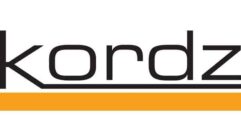Learn the Lingo to Ensure Success
belied the solid foundation provided by the various members of the project team. Now that we are all sitting on top of the iceberg, we have to learn to play together or communicate with one another.
IN LAST MONTH’S COLUMN, I TALKED ABOUT HOW THE tip of the project “iceberg” belied the solid foundation provided by the various members of the project team. Now that we are all sitting on top of the iceberg, we have to learn to play together or communicate with one another. Like a musical band, there are multiple voices and instruments, hopefully, following the same piece of music that we all know how to read.OPEN LINESTHE WINNING BID
In construction projects, there are formal paths and means of communication that need to be followed to resolve issues or conflicts that will inevitably arise. The use of these tools begins the moment the contractor picks up the set of plans to prepare his bid. How well a contractor uses these tools can determine whether or not he is the successful bidder.
It all starts during the bid period, where the contractor should carefully examine the bid documents — drawings and specifications — to make sure he understands the design team’s intent. It’s not just what the AV consultant produces; it is what the whole design team has produced.
Remember, the bid document is the consultant’s effort to communicate that intent to the contractor. It’s important to “ask early and ask often.” It can save a contractor, the design team, and, especially, the owner a lot of trouble later in the project.
Consultants are not without egos, but none of us has yet claimed to be perfect. We are responsible to ensure that we follow a standard of care regarding the systems we design. I know my estimation of a contractor rises considerably when he or she has taken the time to read the bid documents and then calls me or sends an e-mail with questions. Those phone calls and e-mails tell me that someone out there is listening.
The formal avenue for answering those questions is the bid addendum. The design team and the owner expect to issue at least one, and possibly more, of these documents during the bid period. They are a symbol of our humanity and an admission of our lack of perfection.
Addenda are sent out to everyone on the bid list, which may be one reason AV contractors don’t ask questions. Perhaps they are afraid of letting everyone else know what they have learned, and thus losing a competitive advantage. It may lose you some profit, but I have rarely found that asking questions will cause you to lose the job. If you have a question, remember that others likely have that same question, too.
These questions can, and should, include Requests for Substitution. This is a communications tool that the contractor can use to propose alternative equipment. The contractor might have a better solution or may not have access to the specified product. Unless the consultant has called out acceptable alternates, this is the preferred means for the contractor. The consultant may not approve that request, based on a host of issues. On one project, I had an integrator ask to substitute one brand of video projector for another. Based on the owner’s preferences, and not my own caprice, I denied the integrator’s Request for Substitution.
Once the contractor has won the bid, other formal communication tools come into play. The first is the preparation of the equipment submittals and the contractor’s shop drawings. These documents show that the contractor understands the project and how it is supposed to go together. They are not intended to be a regurgitation of the bid documents, without any changes.
The shop drawings typically include detailed system block diagrams, rack elevations, panel details, mounting details, and raceway and wiring details. Equipment submittals are also provided at this time, providing a complete overview of the contractor’s grasp of the project. At this point, the consultant may make corrections to the package. These changes, a result of the consultant’s review of the shop drawings, don’t become part of the package until the consultant and the architect have issued them as part of one of two other types of instruments — a Change Order (CO) or Architect’s Supplemental Instructions (ASI).
Learn the Lingo to Ensure Success
belied the solid foundation provided by the various members of the project team. Now that we are all sitting on top of the iceberg, we have to learn to play together or communicate with one another.
COs and ASIs are essentially equal because they both direct the contractor to make changes to the contract. There is one big difference, however. The CO involves additional charges; the ASI does not.
The ASI is typically used to clarify design intent, and there will be no change in the contract price. The choice of instrument to be used is determined by the architect. Usually the consultant has to determine a rough estimate of these changes and discuss them with the architect and the owner. If there is a cost change, whether it is a cost increase or a decrease, a CO will be issued. If not, the contractor sees an ASI.
COs or Supplemental Instructions can also result from another formal communication tool — the Request for Information (RFI). It contains questions such as, how do I fix this problem; the specified device is no longer available, what do I substitute; this unit will not fit into the space provided, how do we modify the construction or the design to accommodate it; or there is no detail that covers this mounting condition, how do you (the consultant or architect) want this installed? The contractor may include a possible solution, if he has one, with his question. A CO or an ASI would result from this. If the contractor feels there may be an additional cost associated with this change, this is noted and the design team comes back and asks the contractor to provide a Change Order Proposal (COP) based on the proposed solution.
These are all formal means of communications, somewhat like a band leader sounding the samba whistle to indicate a change in pattern, speed, or rhythm to the rest of the team. There are also informal communication paths.
If a consultant is on site, it’s a great time to ask a question before it becomes an issue. The contractor and the consultant can work out the issue on site, and follow it up with the formal documentation shortly after. This is more like the tumbadora and the conga players listening to the quinto player during his lead and adjusting their patterns a little to match, making sure the whole group stays in sync and the song moves forward.
Whether beating the drums or finishing the project, the goal is the same — creating something that brings life and pleasure. In both instances, the key is communication and respect for each other and the task at hand. If you play well together, you always get to play again.
Thom Mullins is a senior consultant with BRC Acoustics & Technology Consulting in Seattle. He can be reached at [email protected].










